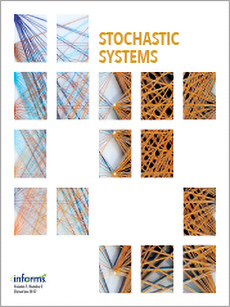Abstract
We consider a two–armed bandit problem which involves sequential sampling from two non-homogeneous populations. The response in each is determined by a random covariate vector and a vector of parameters whose values are not known a priori. The goal is to maximize cumulative expected reward. We study this problem in a minimax setting, and develop rate-optimal polices that combine myopic action based on least squares estimates with a suitable “forced sampling” strategy. It is shown that the regret grows logarithmically in the time horizon $n$ and no policy can achieve a slower growth rate over all feasible problem instances. In this setting of linear response bandits, the identity of the sub-optimal action changes with the values of the covariate vector, and the optimal policy is subject to sampling from the inferior population at a rate that grows like $\sqrt{n}$.
Citation
Alexander Goldenshluger. Assaf Zeevi. "A linear response bandit problem." Stoch. Syst. 3 (1) 230 - 261, 2013. https://doi.org/10.1214/11-SSY032
Information





